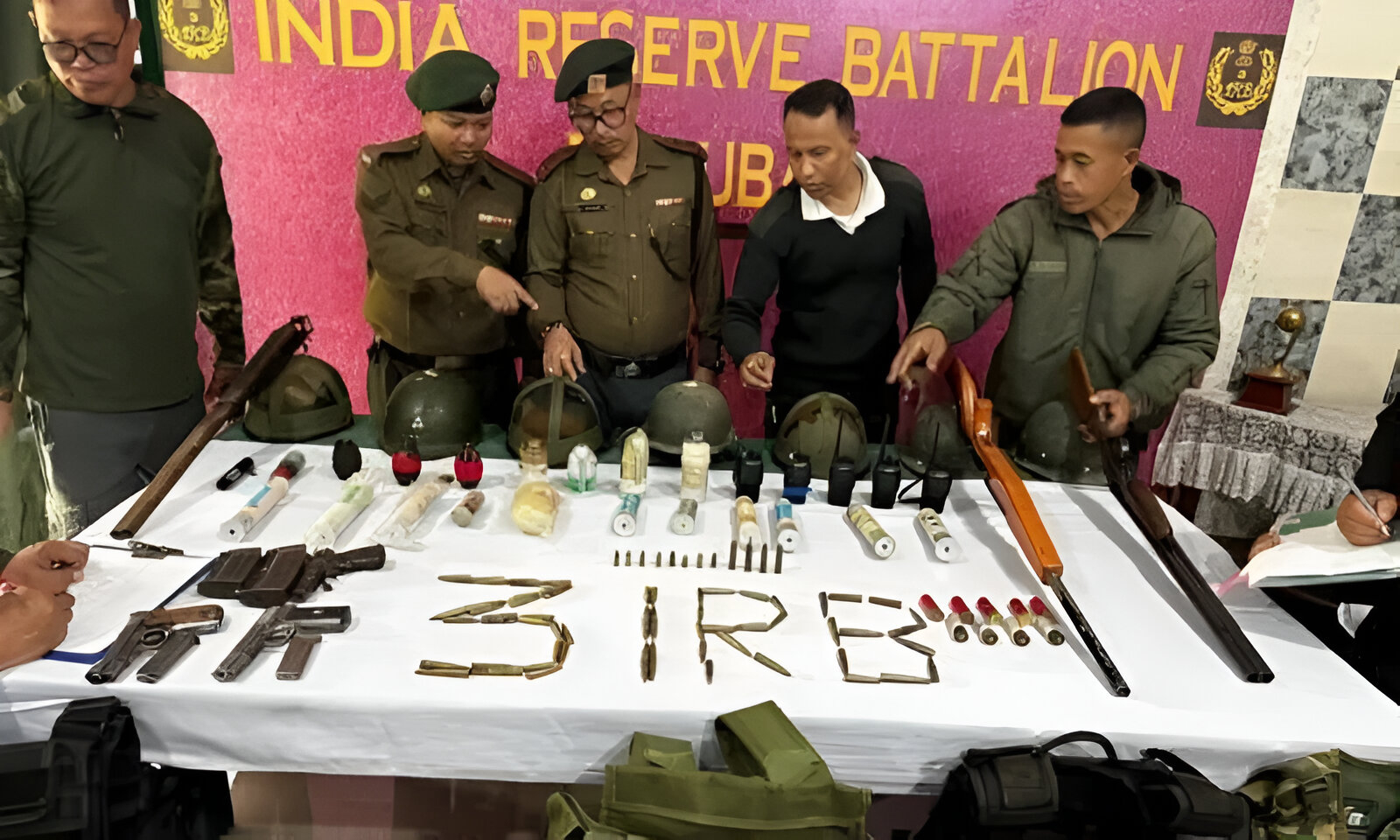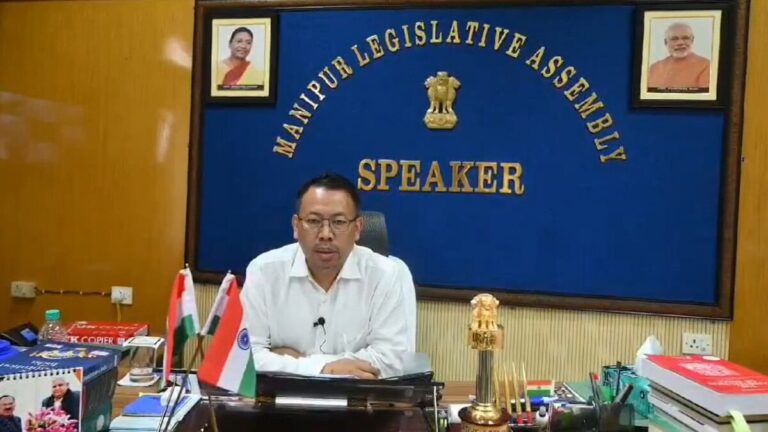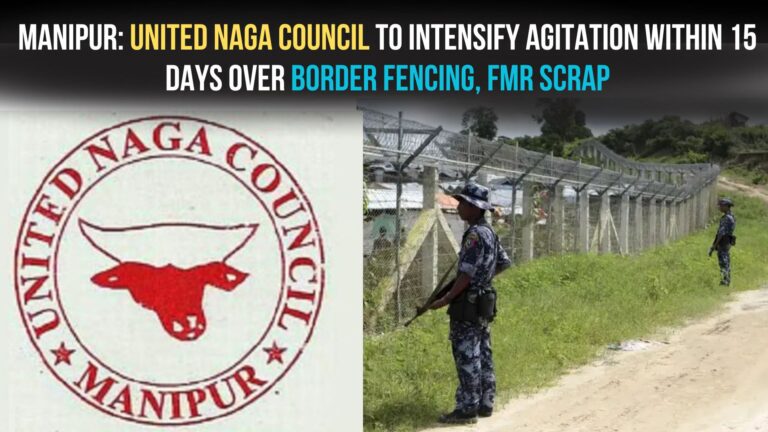Manipur Disarmament: Over 4200 Weapons Surrendered
Short Summary
In a major breakthrough for peace and security in Manipur, over 4200 weapons have been surrendered as part of a comprehensive disarmament initiative. This operation marks a turning point in the region’s long-standing struggle with militancy and unrest. By encouraging individuals to lay down arms, the state is paving the way for lasting peace, improved community trust, and a robust strategy for socio-economic development.
Detailed Article
Introduction: Understanding the Significance of Disarmament in Manipur
Imagine a place where the clamor of conflict is slowly giving way to the hopeful sounds of community rebuilding. In Manipur, a historic disarmament drive has recently taken center stage, with over 4200 weapons surrendered in a bid to end decades of unrest and militancy. This milestone is not just about the number of arms handed over—it represents a significant stride toward restoring peace, ensuring safety, and creating opportunities for development. If you’ve ever wondered how a region can transition from an environment of fear to one of hope, this story from Manipur offers an inspiring example.
Background: The Roots of Conflict and the Need for Disarmament in Manipur
To truly appreciate the impact of this disarmament operation, it’s essential to understand the historical context. Manipur, with its lush landscapes and diverse cultures, has unfortunately been no stranger to strife. Over the years, various insurgent groups have taken advantage of local grievances and rugged terrains, fueling a cycle of violence that has disrupted the lives of countless residents.
For decades, arms have been an unfortunate constant in the region, symbolizing both the desire for autonomy and the means to enforce it. These weapons, ranging from small arms to more advanced weaponry, have often been a tool for both survival and defiance in an environment marked by conflict. However, they have also contributed to a persistent climate of fear and uncertainty. The recent surrender of over 4200 weapons is a beacon of hope—a decisive step in the effort to demilitarize the area and create a safer environment for all.
The Disarmament Operation: A Closer Look
So, what exactly happened during this landmark operation? The disarmament drive in Manipur was a carefully coordinated effort that combined intelligence, community outreach, and the promise of a better future. Law enforcement agencies and government officials worked tirelessly to encourage militants and arms-bearers to voluntarily surrender their weapons.
Imagine a scenario where every surrendered weapon symbolizes a personal choice for peace—a moment when someone decides that the path of violence is no longer the way forward. That is exactly the spirit behind this operation. The process was designed not as a forced seizure, but as an opportunity for individuals to reintegrate into society, receive support, and start afresh without the burden of armed conflict.
The surrendered arms were varied, including handguns, rifles, and even heavier equipment that had once fueled decades of militancy. The impressive tally of 4200+ weapons surrendered is a testament to the operation’s success and to the courage of those who chose peace over perpetual conflict.
Local Reaction and Community Impact: A Step Toward Healing
Let’s take a moment to reflect on what this means for the local community. For many residents of Manipur, the constant threat of violence has been a daily reality. Every surrendered weapon is a symbol of hope—a step toward a future where children can play safely in the streets and families can live without fear.
Local communities have greeted the news with cautious optimism and relief. Imagine a farmer who has long been haunted by the presence of armed militants; now, as these weapons are taken off the streets, there’s a renewed sense of security. The disarmament operation is not just a victory for law enforcement—it’s a win for every individual who dreams of a peaceful, prosperous life.
Community leaders, educators, and local business owners are now more hopeful than ever. They see this initiative as the beginning of a broader transformation that could lead to enhanced economic opportunities, improved education, and better health facilities. After all, a community free from the fear of violence can invest more in its future rather than constantly worrying about survival.
Security Implications: Strengthening the Fabric of the State
From a security perspective, the disarmament drive in Manipur is a game-changer. When you remove the weapons from the equation, you significantly weaken the infrastructure that supports insurgency. Think of it like removing the fuel from a fire—the flames of conflict begin to die down, and what remains is a chance to rebuild from the ashes.
The operation sends a clear message to militant groups: the state is committed to restoring order and will use every tool at its disposal to ensure lasting peace. By disarming those involved in armed conflict, law enforcement not only disrupts existing militant networks but also prevents the future proliferation of arms that could spark new violence.
Moreover, this step is expected to foster better cooperation between the security forces and local communities. When citizens see that their safety is a priority, trust in law enforcement grows, paving the way for more community-driven initiatives that can help sustain peace and development over the long term.
Government Initiatives and Strategies: A Holistic Approach to Peace
While the surrender of over 4200 weapons is a monumental achievement in itself, it is part of a larger, more comprehensive strategy aimed at ensuring peace and stability in Manipur. The government’s approach goes beyond disarmament—it encompasses a series of initiatives designed to address the underlying socio-economic factors that have long fueled conflict in the region.
One major component of this strategy is community rehabilitation. Instead of merely disarming militants, the government is committed to reintegrating those who have laid down their arms back into society. This involves providing vocational training, educational opportunities, and financial support to help former militants build a new life.
Imagine a young man who once believed that carrying a weapon was his only path to survival. Now, with the support of government programs, he can learn a trade, start a small business, or even pursue further education. This holistic approach ensures that the roots of violence—poverty, unemployment, and lack of education—are addressed, making it less likely for future generations to fall into the same cycle of conflict.
In addition, local infrastructure projects, such as road improvements, healthcare facilities, and schools, are being prioritized to stimulate economic growth and enhance the quality of life. When communities see tangible improvements in their daily lives, the allure of militancy fades, replaced by a shared vision of progress and development.
International Perspectives and Global Relevance
The success of Manipur’s disarmament drive has not gone unnoticed beyond India’s borders. Globally, disarmament is seen as a critical step in reducing conflict and promoting sustainable development. Countries facing similar challenges have taken inspiration from Manipur’s approach—blending strong law enforcement with robust community support and development initiatives.
International observers note that the surrender of over 4200 weapons in Manipur is a clear indicator that comprehensive disarmament programs can work. It shows that when governments offer viable alternatives and support systems, individuals are more likely to choose peace over violence. This success story could serve as a model for other conflict-prone regions, encouraging a shift in strategies from purely punitive measures to ones that emphasize rehabilitation and community building.
Moreover, global security experts have emphasized the importance of disarmament in reducing the spread of illicit arms and curbing the influence of insurgent networks. By effectively dismantling these networks, Manipur is contributing to a broader effort to stabilize regions that have long been marred by armed conflict.
Economic and Social Ramifications: A Path to Sustainable Development
The impact of this disarmament initiative is not limited to enhanced security—it also holds significant promise for economic and social development in Manipur. When armed conflict is replaced with peace, the doors to economic opportunities swing wide open.
Local businesses can operate without the constant threat of violence, encouraging investment and entrepreneurship. For example, imagine a local market where traders, freed from the fear of militant reprisals, can flourish. With a more stable environment, investors might be more inclined to open new businesses, creating jobs and spurring economic growth.
Additionally, improved security paves the way for better educational and healthcare facilities. Schools can thrive when teachers and students are not living in fear, and hospitals can function more efficiently without the disruptions caused by unrest. These changes not only enhance the overall quality of life but also contribute to a more educated and healthier workforce—an essential ingredient for long-term development.
Socially, the disarmament drive is likely to have a transformative effect. When people are no longer forced to choose between survival and peace, communities can begin to heal old wounds and build stronger bonds. Cultural festivals, community gatherings, and local celebrations—once overshadowed by conflict—can now reclaim their rightful place in everyday life.
The Role of Civil Society: Bridging the Gap Between Government and People
A critical element in the success of Manipur’s disarmament operation has been the active involvement of civil society. Local NGOs, community leaders, and volunteer groups have played an instrumental role in encouraging weapon surrender and supporting the reintegration of former militants. These organizations have acted as a bridge between the government and the people, ensuring that the disarmament process is not seen merely as a state imposition but as a community-led initiative.
Think of civil society as the glue that binds a community together. Their efforts in organizing awareness campaigns, facilitating dialogue, and providing direct assistance to those affected by conflict have been invaluable. By creating platforms for open discussion and mutual support, these groups have helped to build trust—a critical factor in any successful peace initiative.
Counterinsurgency Strategies: Lessons Learned and Future Directions
The disarmament initiative in Manipur is not an isolated event; it is part of a broader counterinsurgency strategy that has evolved over many years. Law enforcement agencies have learned valuable lessons from past operations—lessons that now inform the multi-pronged approach seen today.
One of the key takeaways has been the importance of patience and persistence. Disarmament is a process, not a single event. It requires consistent effort, continuous engagement with local communities, and the willingness to address deep-rooted issues such as poverty and unemployment. By combining strict security measures with long-term developmental plans, Manipur is creating a model that could help mitigate the risk of future insurgency.
Another important lesson is the value of technology in modern counterinsurgency. From digital surveillance tools to advanced communication systems, technology has become a crucial ally in identifying and neutralizing threats. As the state continues to modernize its security apparatus, the integration of innovative tools will only strengthen the impact of such operations.
Challenges Ahead: Ensuring Lasting Peace and Stability
While the surrender of over 4200 weapons is a monumental achievement, it is also a reminder of the work that lies ahead. Ensuring lasting peace requires ongoing vigilance and a commitment to addressing the underlying causes of conflict. The disarmament drive must be followed by robust policies that promote education, healthcare, and economic opportunity across all sectors of society.
There will undoubtedly be challenges. Some individuals may resist change, and militant ideologies can be deeply entrenched. However, with sustained effort, continuous dialogue, and the support of both the government and civil society, these obstacles can be overcome. It’s like tending to a garden—regular care, attention, and the right conditions will eventually yield a bountiful harvest.
Community Empowerment: The Key to a Brighter Future
Empowering local communities is at the heart of Manipur’s strategy for long-term peace. When people feel they have a stake in the future of their region, they are more likely to work towards a common goal of stability and progress. The disarmament drive is a critical first step, but community empowerment will be what truly transforms Manipur.
Programs that focus on education, vocational training, and microfinance are being rolled out to ensure that those affected by militancy can find new opportunities. Imagine a community center bustling with activity—young people learning new skills, entrepreneurs starting small businesses, and families working together to rebuild their lives. This vision of a united, self-reliant community is the ultimate goal of the disarmament initiative.
Reintegration and Rehabilitation: Building Bridges, Not Barriers
An essential component of the disarmament process is the safe reintegration of former militants into society. Rehabilitation programs aim to help individuals transition from a life of violence to one of constructive engagement. These programs provide counseling, education, and job opportunities, ensuring that those who once carried arms can now carry the tools for a better future.
The human element cannot be overstated here. Every weapon surrendered represents a person willing to change—a person who, with the right support, can become a contributor to society rather than a source of conflict. By investing in rehabilitation, Manipur is not only disarming militants but also disarming the factors that drive them towards violence in the first place.
Building a Legacy of Peace: The Road Ahead for Manipur
As we look toward the future, the disarmament of over 4200 weapons in Manipur stands as a symbol of hope and transformation. It is a milestone that demonstrates the power of collaborative efforts between the government, security forces, and civil society. More importantly, it lays the foundation for a legacy of peace that can benefit future generations.
What does the road ahead look like? It’s a journey filled with opportunities and challenges. The state must continue to invest in infrastructure, education, and health, while also keeping a watchful eye on any signs of renewed militancy. With the right mix of vigilance, empathy, and development, Manipur can evolve into a model of sustainable peace—a region where conflict is replaced by opportunity, and fear is replaced by hope.
Conclusion: A Beacon of Hope Amidst Transformation
In conclusion, the surrender of over 4200 weapons in Manipur is much more than a statistical victory—it is a transformative moment that promises to redefine the region’s future. This disarmament operation is a powerful reminder that peace is achievable, even in areas long marred by conflict. It highlights the importance of addressing both the symptoms and the underlying causes of violence, ensuring that every step toward disarmament is also a step toward social and economic renewal.
As we celebrate this achievement, it’s crucial to remain committed to the broader mission: building a future where every individual can live without fear, where communities thrive, and where the scars of the past give way to the promise of a brighter tomorrow. The journey is long, and challenges remain, but with determination, collaboration, and a shared vision for peace, Manipur is well on its way to becoming a beacon of hope in a turbulent world.
FAQs
- What triggered the disarmament initiative in Manipur?
The disarmament drive was launched as a comprehensive effort to reduce militancy and promote peace by addressing the long-standing issue of weapon proliferation in the region. It involved community outreach, robust security measures, and government support to encourage voluntary surrender of arms. - Who were the key participants in the disarmament process?
The initiative involved a collaborative effort between law enforcement agencies, government officials, local NGOs, and community leaders, all working together to create an environment where militants and arms-bearers felt safe to surrender their weapons. - How does disarmament benefit the local communities?
Disarmament leads to enhanced security, improved trust in law enforcement, and opens up opportunities for economic and social development. With fewer weapons on the streets, communities can focus on rebuilding and thriving in a peaceful environment. - What types of weapons were surrendered during this operation?
The operation saw the surrender of a variety of arms, including handguns, rifles, and other weaponry that had been used in insurgent activities, marking a significant reduction in the potential for armed conflict. - What future measures are planned to ensure lasting peace in Manipur?
The government plans to continue its holistic approach by investing in community rehabilitation, economic development programs, education, and enhanced surveillance, ensuring that the progress made through disarmament is sustained over the long term.



